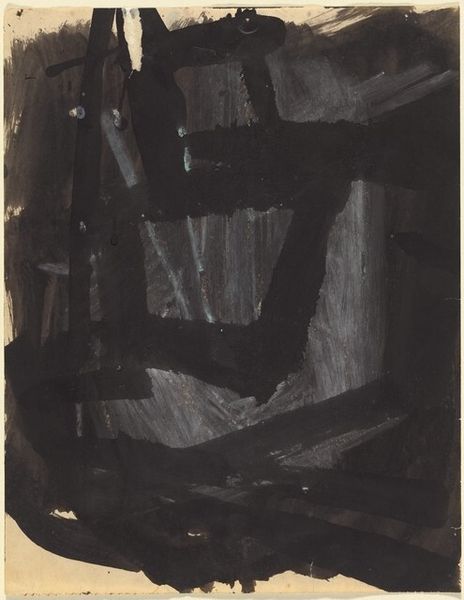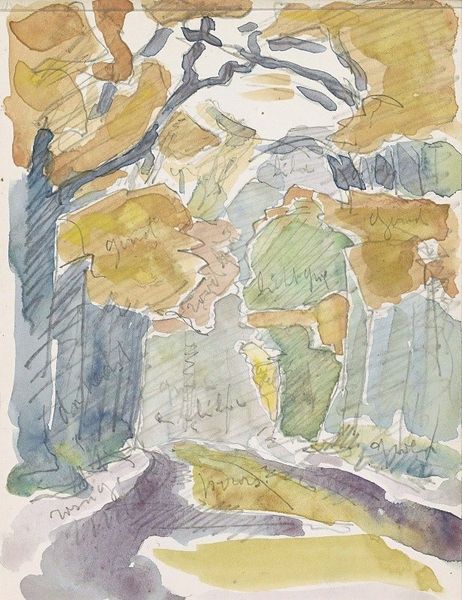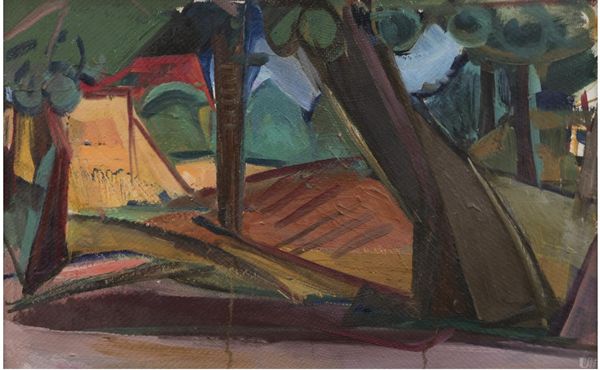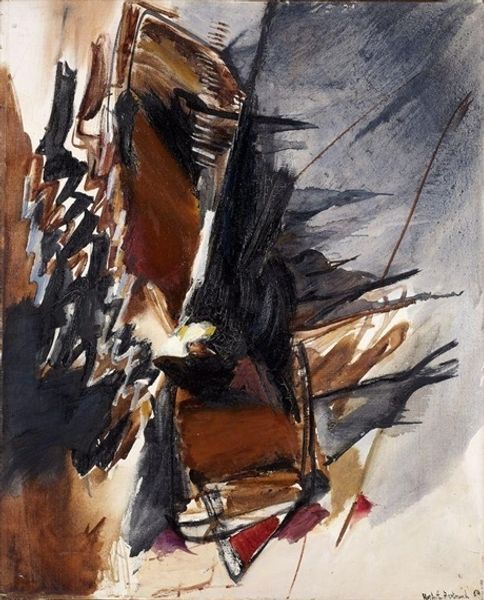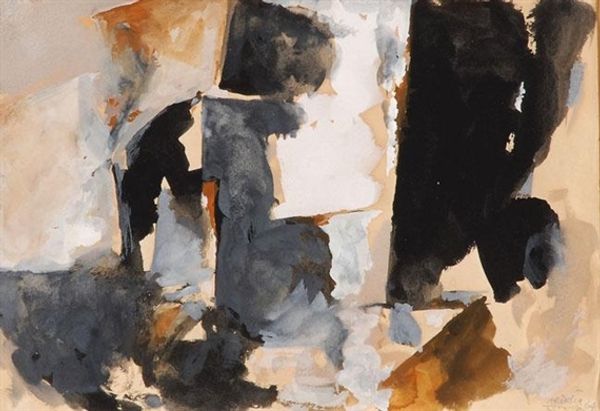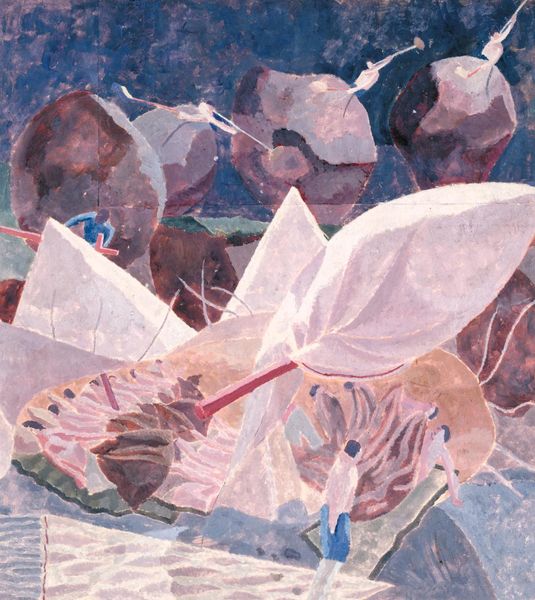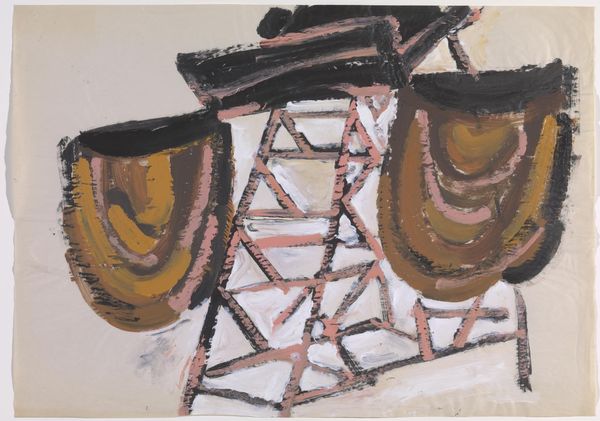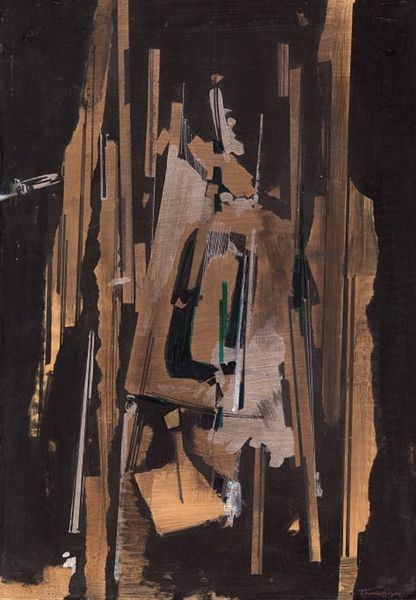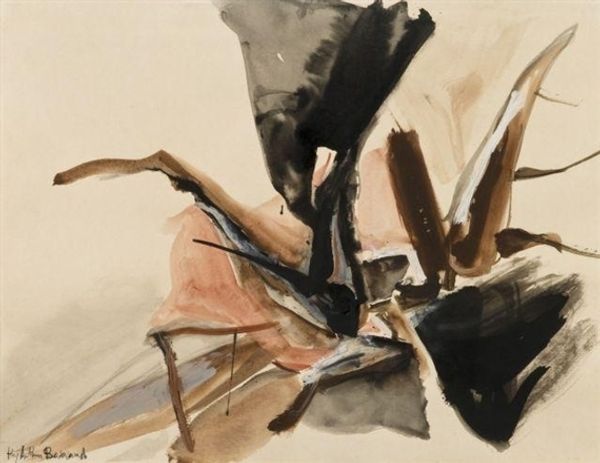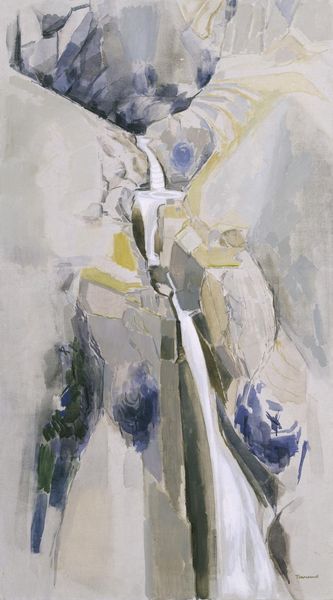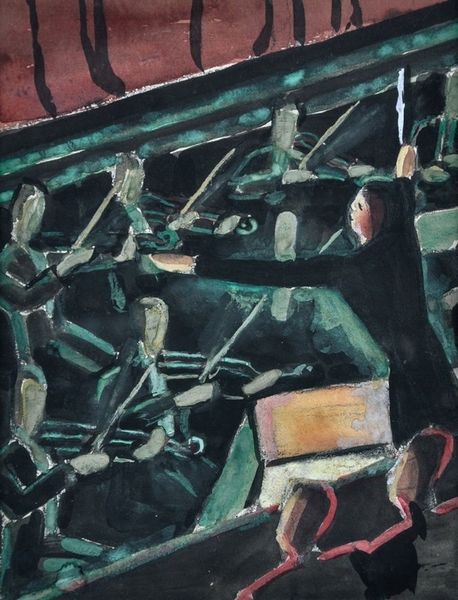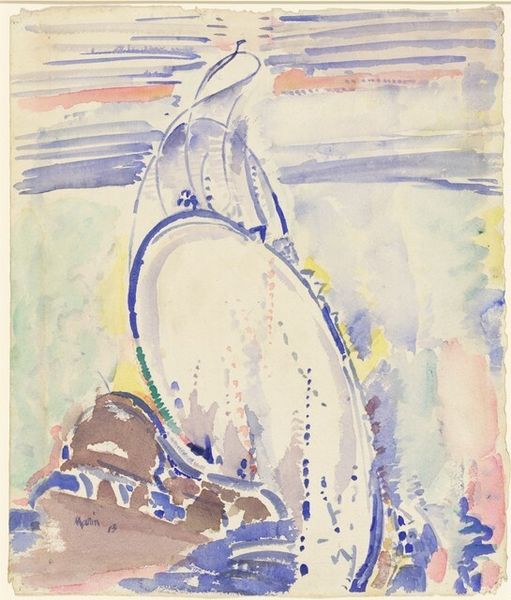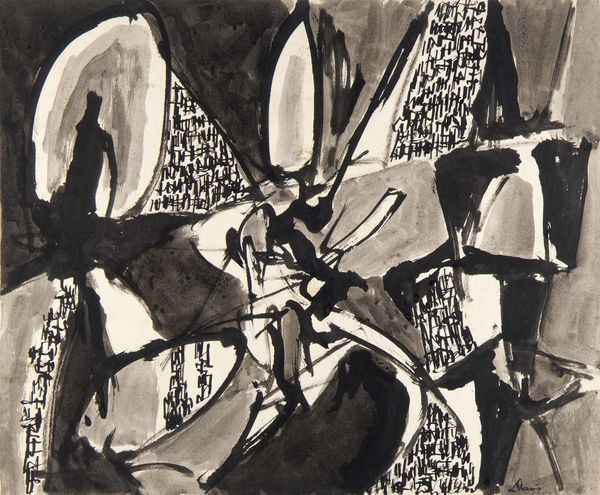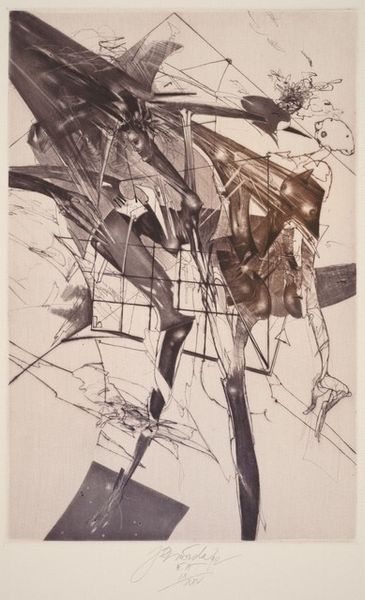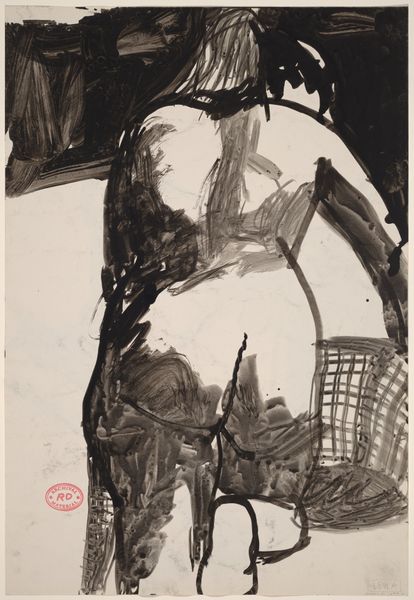
Copyright: Edward Hopper,Fair Use
Curator: The work before us is Edward Hopper's "Funnel of Trawler," a watercolor created in 1924. Hopper is, of course, renowned for his oil paintings but, initially, worked more prolifically in watercolor. Editor: There's a kind of starkness to it, isn't there? Despite the softness you’d expect from watercolor. An almost industrial melancholy conveyed through the somber blues and grays. Curator: Hopper's move from illustration to fine art was really solidified through the accessibility and relative affordability of watercolor painting. The medium lent itself to depicting these everyday scenes. This close-up view of a trawler's components invites contemplation on the aesthetics of maritime labor. It reminds us that his paintings are deeply rooted in observing, engaging with, and reinterpreting working-class environments. Editor: Absolutely, the working class context here is impossible to ignore. Think about the history of the sea, exploitation and colonialization, trade routes. What's particularly interesting to me is the way the funnel, usually associated with movement and purpose, feels almost stagnant. Are the boatworkers present in Hopper's paintings or rather forgotten by it? This makes me reflect on the impact of these industries. The artist situates the scene as ordinary. Curator: Indeed, and let’s not forget the physical act of production. Watercolors offered speed, were cost effective, which aligned with a necessity to quickly capture these environments for a sustained production. His brushstrokes become marks of efficiency, documenting his impressions, also allowing him, on a certain material level, to be efficient and produce multiple scenes. Editor: This efficient creation makes me question which lives get the privilege to become a part of art history, it is not the boatworkers here. However, it is definitely food for thought on class, labour and representation. Curator: Hopper was quite invested in the socio-economic changes shaping early 20th-century America. We get a slice of industrial modernity captured at the time, through humble material practice. Editor: Ultimately, what lingers for me is a profound sense of displacement, one echoed and heightened by the unadorned focus on what, at first glance, may seem merely functional. This artwork invites an important questioning on the nature of work and progress in art history and still in the modern world.
Comments
No comments
Be the first to comment and join the conversation on the ultimate creative platform.
